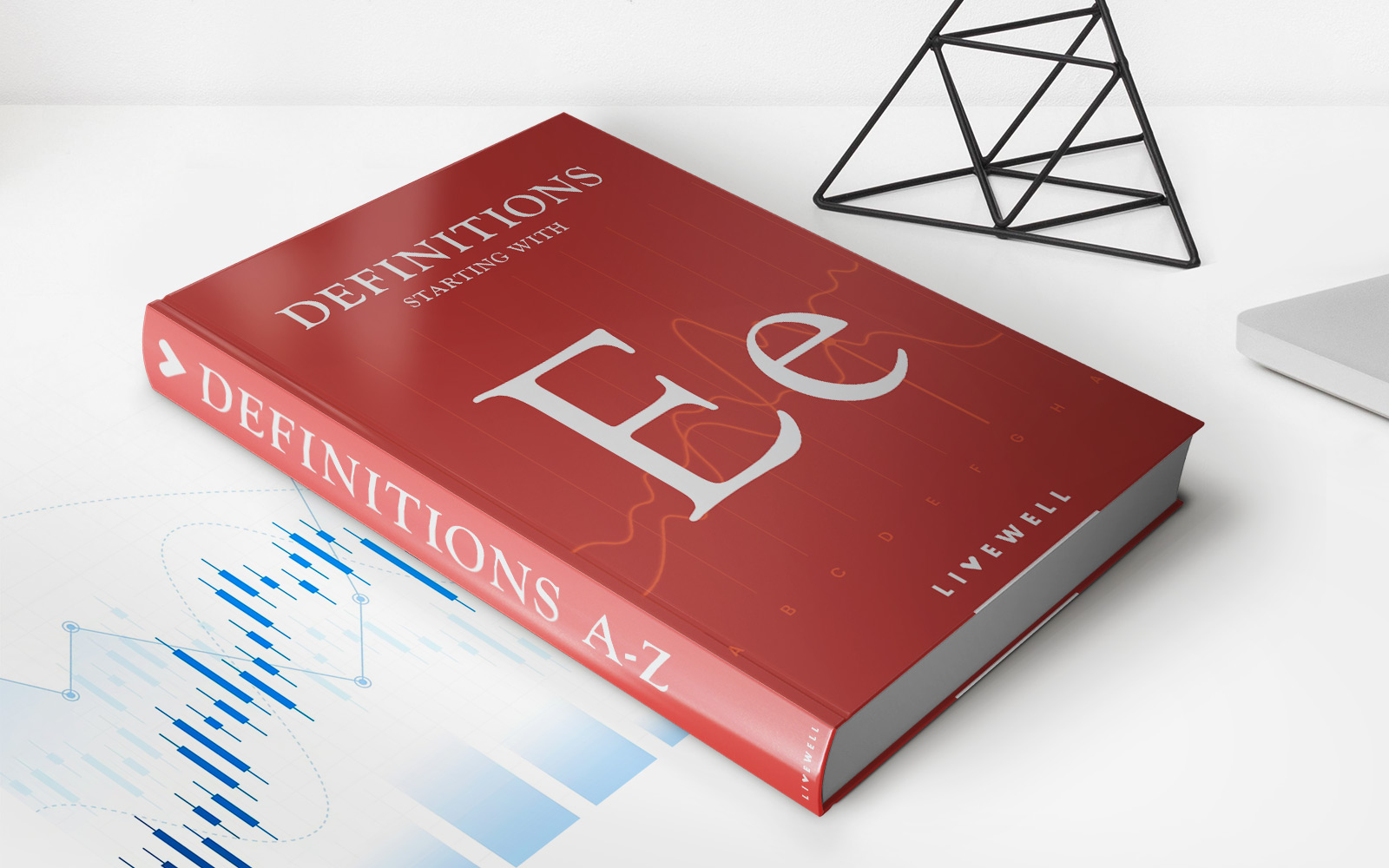

Finance
How Is L&I Pension Calculated
Published: November 27, 2023
Learn how L&I pension calculations are done and gain valuable insights into the financial aspects of retirement planning.
(Many of the links in this article redirect to a specific reviewed product. Your purchase of these products through affiliate links helps to generate commission for LiveWell, at no extra cost. Learn more)
Table of Contents
Introduction
Welcome to the world of L&I pensions! If you’re not familiar with this term, don’t worry – we’ve got you covered. L&I stands for “Labor and Industries,” and L&I pensions are a type of pension program that provides financial support to workers who have suffered work-related injuries or diseases.
Workplace accidents and illnesses can be devastating, and they often result in long-term disability or reduced earning capacity. L&I pensions aim to alleviate the financial burden faced by these workers by providing them with a source of income to replace their lost wages.
Understanding how L&I pensions are calculated is crucial for individuals who are currently receiving benefits or those who may need to file a claim in the future. By having a clear understanding of the calculation process, you can ensure that you receive the appropriate amount to support your needs.
In this article, we will delve into the details of L&I pension calculations, explaining the factors that affect the calculation and the formula used to determine the pension amount. We’ll also provide examples to illustrate the calculation process and answer some frequently asked questions to help you gain a comprehensive understanding of L&I pension calculations. So, let’s get started!
What is L&I Pension
A Labor and Industries (L&I) pension is a type of financial benefit provided to workers who have sustained work-related injuries or diseases that result in long-term disability or reduced earning capacity. The aim of L&I pensions is to provide these individuals with a consistent source of income to help cover their living expenses and support their rehabilitation and recovery.
Unlike traditional pensions, L&I pensions are not based on years of service or age. Instead, they are specifically designed to compensate workers for their decreased ability to earn a living due to work-related injuries or illnesses.
One of the key aspects of L&I pensions is that they are typically provided through state-run programs, such as workers’ compensation or disability benefits, rather than through private pension plans. These programs are administered by the respective state’s Labor and Industries Department, ensuring that workers receive the benefits they are entitled to under the law.
L&I pensions provide vital support to workers who are unable to perform their previous job duties due to their work-related conditions. They help cover a portion of the lost wages and in some cases may also provide additional support for medical treatments, vocational rehabilitation, and other related services.
It is important to note that the eligibility criteria for L&I pensions vary from state to state. Each state has its own specific regulations regarding the types of injuries or diseases that qualify for benefits, the waiting periods before benefits can be received, and the duration and amount of benefits provided.
Overall, L&I pensions play a crucial role in providing financial stability and support to workers who have suffered work-related injuries or diseases. They are designed to help individuals maintain their quality of life and access the necessary resources to aid in their recovery and rehabilitation.
Factors Affecting L&I Pension Calculation
Calculating the exact amount of an L&I pension involves considering several factors that can impact the final benefit amount. Understanding these factors is essential to determine how much compensation an injured worker is entitled to. Here are the key factors that can affect L&I pension calculations:
- Wage Base: The wage base is the maximum dollar amount of income that is considered when calculating the pension benefit. The wage base can vary depending on the state or jurisdiction in which the injury occurred.
- Time-Loss Compensation: If an individual has received time-loss compensation, which is the temporary wage replacement provided while recovering from a work-related injury or illness, it may impact the final pension calculation.
- Permanent Partial Disability (PPD): If a worker has a permanent partial disability resulting from their work-related injury, it can affect the L&I pension calculation. The severity and impact of the permanent impairment are assessed to determine the adjustment in the benefit amount.
- Age at the Time of Injury: In some states, the age of the worker at the time of the injury can influence the pension calculation. Typically, younger workers may receive a higher percentage of their base wage compared to older workers.
- Vocational Factors: Certain vocational factors like education, training, work experience, and transferable skills can impact the L&I pension calculation. These factors are evaluated to determine the worker’s potential earning capacity after the injury.
- Benefit Payment Options: Workers may have the option to choose between different benefit payment options, such as monthly payments or a lump sum. The chosen payment option can affect the final pension calculation.
It’s important to note that the specific rules and regulations regarding these factors can vary from state to state. Therefore, it is recommended to consult the respective state’s Labor and Industries Department or a legal professional specializing in workers’ compensation to fully understand how these factors apply to your specific situation.
By taking into account these factors, the Labor and Industries Department can assess the impact of the injury on the worker’s earning capacity and determine an appropriate compensation amount that reflects the worker’s reduced ability to earn a living.
Calculation Formula for L&I Pension
The calculation of an L&I pension involves a complex formula that takes into account various factors unique to each individual case. While the specific details may vary by state, the general formula for calculating an L&I pension can be broken down into several key elements:
- Base Wage: The calculation starts with determining the injured worker’s base wage, which is typically the average monthly or weekly wage earned prior to the injury. This wage amount serves as the foundation for the pension calculation.
- Pension Rate: The pension rate is the percentage of the base wage that the worker is entitled to receive as their pension benefit. This rate is determined based on the severity of the work-related injury or disability, as assessed by medical professionals and vocational experts.
- Wage Base Adjustment: The pension rate is then applied to a wage base, which is the maximum allowable wage used in the calculation. If the worker’s base wage exceeds the wage base, the pension calculation will be capped at the limit set by the state.
- Time-Loss Compensation Offset: If the worker has received time-loss compensation benefits while recovering from the injury, these benefits may be subtracted from the calculated pension amount to avoid duplicate payments.
- Permanent Partial Disability Adjustment: If the worker has a permanent partial disability, as determined by medical evaluations, an additional adjustment may be made to the pension calculation to reflect the impact of the impairment on the worker’s earning capacity.
- Final Calculation: Once all the relevant factors have been considered, the final calculated pension amount is determined. This amount represents the ongoing monthly or weekly payment that the worker is eligible to receive as their L&I pension.
It is important to note that the specific details of the formula and the calculation method can vary depending on the state or jurisdiction where the injury occurred. Consulting with the Labor and Industries Department or seeking legal advice is recommended to understand the precise calculation method applicable to your specific situation.
By utilizing this formula, the Labor and Industries Department aims to ensure that injured workers receive fair and adequate compensation that aligns with their reduced earning capacity due to the work-related injury or disability.
Understanding the L&I Pension Calculation Process
The process of calculating an L&I pension involves a careful evaluation of various factors to determine the appropriate compensation for a worker’s work-related injury or illness. This process typically follows a series of steps that assess the impact of the injury on the worker’s earning capacity. Here’s a breakdown of the L&I pension calculation process:
- Filing a Claim: The first step is to file a claim with the Labor and Industries Department or the relevant state agency responsible for workers’ compensation. This involves providing detailed information about the injury, including how it occurred and the resulting disabilities or limitations.
- Medical Evaluation: To determine the severity and impact of the injury, the worker is typically required to undergo a medical evaluation. This evaluation may involve examinations, tests, and consultations with healthcare professionals who specialize in assessing work-related injuries and their effects on employment capacity.
- Vocational Assessment: In addition to medical evaluation, a vocational assessment may be conducted to evaluate the worker’s transferable skills, education, training, work experience, and other factors that could impact their ability to work in alternative positions or industries.
- Calculating the Base Wage: The next step involves determining the base wage, which is the average monthly or weekly wage earned by the worker prior to the injury. This amount serves as the starting point for the pension calculation.
- Determining the Pension Rate: The Labor and Industries Department then determines the pension rate based on the severity of the work-related injury or disability. This rate represents the percentage of the base wage that the worker is entitled to receive as their pension benefit.
- Applying Wage Base and Other Adjustments: The calculated pension rate is then applied to a wage base, which represents the maximum allowable wage used in the calculation. If the worker’s base wage exceeds the wage base, it may be adjusted to ensure compliance with state regulations. Additionally, adjustments may be made for factors such as time-loss compensation already received and permanent partial disability.
- Finalizing the Pension Calculation: By considering all the relevant factors and applying the appropriate adjustments, the Labor and Industries Department determines the final calculated pension amount. This amount represents the ongoing monthly or weekly payment that the worker is eligible to receive as their L&I pension.
It is essential to keep in mind that the precise steps and details may vary by state or jurisdiction. Therefore, consulting with the Labor and Industries Department or seeking legal advice is recommended to fully understand the specific process and requirements applicable to your case.
By going through this comprehensive calculation process, the aim is to ensure that injured workers receive fair and accurate compensation that reflects the impact of the work-related injury or illness on their earning capacity.
Examples of L&I Pension Calculations
Understanding how L&I pension calculations work can be easier when examining some examples. Keep in mind that these examples are for illustrative purposes only and may not reflect the specific calculations used in your state or jurisdiction. The calculation process can vary depending on individual circumstances and applicable laws. Let’s take a look at a couple of hypothetical scenarios:
Example 1:
John suffered a work-related injury that resulted in a permanent partial disability. Prior to the injury, he earned an average monthly wage of $4,000. After medical evaluations, it was determined that John has a 50% permanent partial disability, which means his earning capacity is reduced by half.
In John’s state, the pension rate for a 50% permanent partial disability is 60% of the worker’s base wage. Using these numbers, here’s how the calculation might look:
- Base Wage: $4,000 per month
- Pension Rate: 60% (for a 50% permanent partial disability)
- Pension Amount: $4,000 (Base Wage) x 60% (Pension Rate) = $2,400
Therefore, John would be eligible for a monthly pension of $2,400 as a result of his work-related injury and the resulting permanent partial disability.
Example 2:
Sarah is injured in a workplace accident and is unable to return to her previous job. At the time of her injury, Sarah was earning an average weekly wage of $900. After a vocational assessment, it is determined that she has transferable skills and can potentially work in a different position, though her earning capacity would be reduced by 25% due to the injury.
In Sarah’s state, the pension rate for a 25% earning capacity reduction is 70%. Based on these figures, the calculation would be as follows:
- Base Wage: $900 per week
- Pension Rate: 70% (for a 25% earning capacity reduction)
- Pension Amount: $900 (Base Wage) x 70% (Pension Rate) = $630
Therefore, Sarah would be eligible for a weekly pension of $630 to compensate for her reduced earning capacity resulting from the work-related injury.
It is crucial to note that these examples are simplified and do not account for additional factors or adjustments that may apply in specific situations. The actual calculation process for L&I pensions can be more complex and involve unique variables based on the circumstances surrounding the individual injury and the applicable state regulations.
Consulting with the Labor and Industries Department or seeking legal advice can provide a more accurate understanding of the L&I pension calculations specific to your case.
Common FAQs about L&I Pension Calculation
Calculating an L&I pension can be a complex process, and it’s natural to have questions about how it works. Here are some frequently asked questions about L&I pension calculations:
- How is the base wage determined? The base wage is typically calculated based on the average monthly or weekly earnings of the worker prior to the work-related injury. It may include regular pay, overtime, bonuses, and other forms of compensation.
- What is the pension rate? The pension rate is the percentage of the base wage that the worker is entitled to receive as their pension benefit. The pension rate is determined based on the severity of the work-related injury or disability and the applicable state regulations.
- Does the age of the worker impact the pension calculation? In some states, the age of the worker at the time of the injury may affect the calculation. Generally, younger workers may receive a higher percentage of their base wage compared to older workers to account for their potentially longer period of reduced earning capacity.
- What is the wage base and how does it affect the calculation? The wage base is the maximum allowable wage used in the pension calculation. If the worker’s base wage exceeds the wage base, the pension calculation will be capped at the limit set by the state regulations.
- How does time-loss compensation factor into the calculation? Time-loss compensation, which is the temporary wage replacement provided while recovering from a work-related injury or illness, may offset the calculated pension amount to avoid duplicate payments. The specifics can vary depending on state regulations.
- What are vocational factors and how do they impact the calculation? Vocational factors, such as education, training, work experience, and transferable skills, are assessed to determine the worker’s potential earning capacity after the injury. These factors may influence the final pension calculation accordingly.
- Can I choose a lump sum payment instead of monthly payments? Depending on the state regulations, workers may have the option to choose between monthly pension payments or a lump sum payment. It is important to consider the potential advantages and tax implications before making a decision.
- Can the pension amount change over time? In some cases, the pension amount may be subject to periodic reassessment or adjustments based on changes in the worker’s condition or other factors. Consult with the Labor and Industries Department for information specific to your situation.
- What if I disagree with the L&I pension calculation? If you believe that there is an error or disagreement regarding the L&I pension calculation, you may have the right to appeal the decision. Follow the appropriate procedures outlined by your state’s labor department or seek legal advice for guidance on how to address the issue.
Remember that the specific details and requirements may vary by state or jurisdiction. It’s important to consult with the Labor and Industries Department, workers’ compensation experts, or legal professionals specializing in L&I pensions to get accurate and up-to-date information based on your specific circumstances.
Conclusion
Calculating an L&I pension is a complex process that involves considering several factors to determine the appropriate compensation for workers who have sustained work-related injuries or illnesses. By understanding the various elements that affect the calculation, individuals can gain a clearer understanding of the amount they are entitled to receive.
Factors such as the base wage, pension rate, wage base, time-loss compensation, permanent partial disability, vocational factors, and benefit payment options all play a role in the L&I pension calculation. These factors are carefully evaluated to ensure that the injured worker receives fair and appropriate compensation that reflects their reduced earning capacity.
It is important to recognize that the exact calculation process can vary from state to state, and consulting with the Labor and Industries Department or seeking legal advice is recommended to fully understand the specific requirements and regulations applicable to each case.
By providing financial stability and support, L&I pensions help injured workers navigate the challenges brought on by work-related injuries or illnesses. These pensions aim to alleviate the financial burden and provide a consistent income source to cover living expenses and support the worker’s rehabilitation and recovery.
Understanding the calculation process and the factors that go into determining an L&I pension is crucial in ensuring that workers receive the appropriate compensation to maintain their quality of life. By having a comprehensive understanding of the calculations, individuals can better navigate the system and ensure that they receive the benefits they deserve.
Remember, each L&I pension calculation is unique, and it is advisable to reach out to the appropriate authorities or seek professional guidance to ensure that you receive accurate information tailored to your specific circumstances.
Ultimately, L&I pensions serve as a vital support system for workers who have experienced work-related injuries, providing them with much-needed financial stability and peace of mind during their recovery journey.














